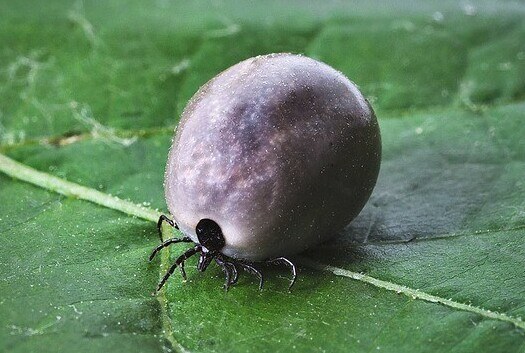Fleas and ticks can be a real pain for pets and their owners. These pesky critters cause discomfort and can pose serious health risks. Protecting your home from fleas and ticks is necessary to keep your pets safe and happy.
In this post, you’ll find all the info about these tiny intruders. We’ll cover what fleas and ticks are, where they live, and the problems they cause. You’ll learn how to spot an infestation, prevent it from happening again, and the best treatments available. Plus, we’ll share tips on how to keep your home and pets protected all year round.

Understanding Fleas and Ticks
Understanding ticks and fleas’ definitions, habitats, and potential health risks is necessary for effective infestation prevention and treatment. It also prepares you to combat these common pests.
What Are Fleas and Ticks?
Fleas and ticks are tiny parasites that feed on the blood of animals and humans. While they might be small, their impact can be significant.
Fleas are about the size of a pinhead, with flat bodies and powerful legs that allow them to jump great distances.
Ticks, are slightly larger, with oval bodies and eight legs, resembling tiny spiders.
Fleas reproduce rapidly, laying up to 50 eggs daily, causing rapid infestations. Ticks, though slower, can live for years and survive prolonged periods without food.
Ticks and fleas are commonly found in warm, humid environments such as furniture, carpets, and beds. They can cause skin infections, hair loss, Rocky Mountain spotted fever, and Lyme disease, which pose serious health risks.
Common Habitats and Life Cycles
Ticks and fleas thrive in warm, humid environments like furare iture, carpets, and rugs, and in moist, shaded areas like grass, shrubs, and leaf piles.
Fleas have a four-stage life cycle, which can be completed in three weeks with proper conditions.
Ticks, a pest in grassy, forested environments, have a four-stage life cycle (eggs, larva, nymph, and adult), and can survive up to three years without food. They need hosts for reproduction so pets are their primary targets.
Understanding ticks and fleas’ habitats and life cycles helps in effective pest management, including regular pet check-ups, house cleaning, and yard care.
Health Risks Posed by Fleas and Ticks

Ticks and fleas pose significant health risks to humans and pets, necessitating preventive treatments, maintaining cleanliness, and conducting regular pet inspections to protect your home and pets from harmful effects.
Pets with flea-allergic dermatitis will experience itching, skin irritation, and hair loss. Though less common today, they can infect humans with infections and transfer tapeworms during grooming.
Ticks can spread illnesses such as Lyme disease and Rocky Mountain spotted fever. If these diseases are not treated, they can result in life-threatening complications.
Ticks can cause tick paralysis in pets, causing muscle weakness and potentially life-threatening paralysis. They can also transmit diseases like Ehrlichiosis and Anaplasmosis, affecting pets and humans.
Prevention Methods for Fleas and Ticks
Preventing fleas and ticks from invading your home is much easier than dealing with an infestation. Strategies include maintaining cleanliness, tending to your yard, and caring for pets.
Maintaining a Clean Home
Keeping your home clean is one of the most effective ways to prevent fleas and ticks.

- Regular vacuuming carpets, rugs, and furniture, especially in pet-friendly areas, using a HEPA filter for deep cleaning, and emptying the bag or canister outside to prevent re-infestation.
- Regularly wash pet bedding, blankets, and fabrics in hot water weekly to eliminate fleas and pests, followed by a high-heat dryer cycle (fleas can’t survive high temperatures).
prevent - Fleas and ticks love to hide. Reduce clutter in basements, attics, and storage areas to limit the number of hiding places for fleas and ticks.
- A flea comb can help trap and eliminate fleas before they invade your home. After each use, dip the comb in soapy water to kill any fleas you’ve collected.
- Follow the manufacturer’s advice on products designed to repel fleas and ticks to ensure their safety for pets and children.
Yard Maintenance Tips
Maintaining your yard is necessary for protecting your home from fleas and ticks. They love to hitch a ride indoors through pets or clothing.

- Mow lawns weekly during peak flea and tick seasons, reducing hiding places and exposing them to sunlight, as they thrive in tall grass and overgrown vegetation.
- Maintaining a clean yard deters pests like fleas and ticks, as it helps remove organic matter, improve the yard, and maintain a healthy environment.
- Maintaining a clear zone of wood chips or gravel between wooded or brushy areas and your lawn can effectively prevent tick migration into your yard.
- Use yard-specific flea and tick control products, including sprays and granules, to treat lawns and gardens, following instructions carefully and ensuring safety for pets and wildlife.
- Proper drainage and morning watering prevent fleas and ticks from surviving in moist environments.
- Introduce nematodes (small worms that feed on larvae), birds and insects to the soil to reduce flea populations and keep them in check.
Pet Care and Grooming
Ensure your pet’s health by monitoring behaviour and health closely, detecting flea or tick infestations early, and promptly consulting a veterinarian if unusual symptoms occur.
- Fleas and ticks can survive indoors in stable temperatures, so continuous use of preventatives will protect your pet year-round.
- Natural remedies like essential oils like lavender, eucalyptus, and cedar wood can be used as supplemental treatments but should be diluted. Consult with a veterinarian before use because some oils are toxic.
- Maintain pet-friendly areas like bedding, crates, and grooming tools by regularly cleaning and disinfecting them to prevent the spread of fleas and ticks.
Identifying an Infestation of Fleas and Ticks
Learn to recognize and identify pest symptoms in homes and pets, allowing for prompt management and elimination before infestation worsens.
Signs of Fleas in Your Home
Learn to detect fleas early to prevent a raging infestation. Look out for these telltale signs that indicate fleas may be present in your home:

- Excessive scratching of pets, particularly around the neck, head, or tail, may indicate flea activity. Flea bites cause itching and discomfort.
- Flea dirt, or feces, is dark, pepper-like specks on pet fur and bedding. Distinguish it from regular dirt by placing specks on a wet paper towel. It will turn reddish brown if from fleas.
- Some pets react to flea saliva, resulting in allergic dermatitis. This is characterized by red, irritated skin, hair loss, and hot patches. These symptoms may necessitate veterinarian intervention.
- Adult fleas may be seen crawling on your pet’s fur or jumping on surfaces throughout your home, particularly in locations where pets spend time.
- Fleas cause itchy red lumps on ankles and lower legs, and if bites are found without any other explanation, they may be the cause.
- Flea eggs are small and white, while larvae look like worms and can be found in carpets, pet beds, and other pet-friendly environments.
Signs of Ticks in Your Home
Ticks can be more challenging to detect than fleas but recognizing signs early can prevent potential health risks. Here are key factors that suggest ticks may be present in your home.
- Regularly check your pet’s skin for ticks, particularly around the ears, head, neck, and feet, as they frequently attach to these areas.
- If you find ticks attached to your pets, it’s a clear sign they’ve been exposed to ticks outdoors. Remove ticks carefully and monitor your pets for any signs of illness or discomfort.
- Ticks may lay eggs indoors, typically in hidden, undisturbed areas like cracks in walls or floors, or under furniture. Look for small, oval-shaped eggs or residues left behind by ticks.
- Living near forested or grassy areas increases tick risk for pets, so regularly inspect pets and homes, especially during peak tick season.
- Symptoms like fever, lethargy, joint discomfort, or unusual rashes may indicate tick-borne diseases in you or your pet. Seek immediate medical or veterinary assistance.
- Ticks are most active during warmer months but can also be active in mild winters. Be cautious year-round, especially in areas with high tick populations.
How to Inspect Your Pets and Home for Fleas and Ticks
Regular examinations of your pets and home are necessary to detect and prevent flea and tick infestations. Here is how to effectively inspect both:

- Examine your pet’s fur and skin thoroughly, focusing on its ears, neck, head, and tail base for black specks, visible fleas, and increased scratching and biting.
- Use a special fine-toothed flea comb on your pet’s fur. This helps to capture fleas and flea filth, which appear as little black spots on the comb.
- Ensure your pet’s skin and fur are tick-free, particularly in areas where they typically latch on, such as between the toes and under the armpits.
- Promptly inspect pets after walks or outdoor playtime for ticks, as they can attach quickly. Immediate attention reduces the risk of them becoming embedded.
- Observe your pet for discomfort, excessive licking or biting, or behavioural changes that may suggest flea or tick bites.
- Regularly inspect pet bedding and furniture for flea filth, eggs, or live fleas; wash bedding with hot water to eliminate bugs.
- Regularly vacuum carpets, rugs, and upholstery, especially in pet-frequented areas. Check corners, crevices, and under furniture where fleas and their eggs may hide.
- Frequently clean pet toys, crates, and grooming tools to prevent fleas and tick infestations. Remove clutter, vacuum under furniture, and eliminate hiding spots.
- To reduce flea and tick habitat, check your yard for signs like tall grass, leaf piles, and wildlife-frequented areas. Cut grass short and create a barrier between wooded and lawn areas.
- Administer flea and tick preventatives to pets, following veterinarian’s recommendations to prevent infestations and reduce pest entry into your home.
Effective Treatment Options for Fleas and Ticks
When prevention measures aren’t enough, effective treatment options can help you tackle flea and tick infestations head-on. Understanding other options helps When choosing the best approach for eliminating and preventing pests.
Over-the-Counter Solutions for Fleas and Ticks
Over-the-counter (OTC) treatments provide accessible options for controlling fleas and ticks in your home and on your pets. Always ensure you are using safe products for your pets.
- Topical treatments, like spot-on treatments and sprays, are applied directly to pet skin to kill and repel fleas and ticks. Follow the manufacturer’s instructions for proper application and frequency.
- Flea and tick shampoos kill pests on pets, but it is important to use shampoo suitable for your pet’s age and species and follow the recommended applications and schedule.
the
- Flea collars around pets’ necks release active ingredients to repel fleas and ticks, providing continuous protection for several months. Choose a comfortable fit and check for irritation or discomfort.
- Sprays and foggers are indoor pesticides that kill adult bugs and prevent eggs and larvae growth in hiding places like carpets, rugs, and upholstery.
- Sprinkle powders and diatomaceous earth on carpets and pet bedding to kill fleas and ticks. This works by dehydrating and desiccating them upon contact. Vacuum after use, and reapply as needed.
- Products containing natural ingredients like essential oils or botanical extracts, repel fleas and ticks, but you should use caution and consult a veterinarian first.
Professional Pest Control
Professional pest control services offer comprehensive solutions to remove fleas and ticks from homes when DIY methods fail.
- Pest control technicians conduct a thorough assessment of your home to determine the severity of the infestation and the type of fleas or ticks present, tailoring the treatment plan accordingly.
- Professionals devise a tailored treatment plan based on inspection findings, targeting fleas and ticks at all stages of development using safe, effective insecticides and treatments.
- Pest control firms offer environmentally friendly treatments like safe sprays, baits, and natural deterrents to minimize ecosystem impact and non-target animals.
- Professional pest control services may offer additional treatments to eradicate fleas and ticks. They advise on long-term pest-prevention techniques based on the severity of the infestation.
- Some pest control firms offer warranties to ensure customer satisfaction and ongoing protection against fleas and ticks. Before you commit, read the terms and conditions to avoid surprises.
- Pest control professionals are trained to safely and effectively address infestations. Specialized equipment and supplies, ensure thorough treatment for homes and pets.
Natural Remedies for Fleas and Ticks
Natural remedies offer alternative options for controlling fleas and ticks, often preferred by pet owners concerned about using chemical treatments. Here are effective natural remedies to consider:

- Essential oils like cedar wood, peppermint, lavender, and eucalyptus are effective in repelling fleas and ticks and can be applied to pet bedding or collars. Consult with a veterinarian first.
- Diatomaceous earth, a natural powder from fossilized algae, effectively kills fleas and ticks by dehydrating and desiccating them on contact. Let sit overnight or a few hours then vacuum thoroughly.
- Let it sit for several hours or overnight, then vacuum.
- Apple cider vinegar repels fleas and ticks by making pet skin less appealing. Mix ACV and water, sprinkle fur, and rinse after bath.
- Brewer’s yeast and garlic supplements can repel fleas and ticks in pets. Excessive doses should not be used without consulting a veterinarian.
- Natural flea collars made from lavender, chamomile, and citronella repel fleas and ticks without pesticides. They offer a pleasant aroma and protection, though performance may vary.
- Homemade flea sprays, made from lemon juice or vinegar and water, can repel fleas temporarily but require frequent reapplication to maintain effectiveness.
Long-Term Strategies for Flea and Tick Control
Implement long-term flea and tick control measures to keep your house and pets pest-free, preventing repeated infestations and maintaining health and comfort.
H3: Seasonal Precautions
Seasonal changes bring flea and tick activity, requiring tailored precautions to protect your home and pets. Here’s how to adjust your approach throughout the year:
- Flea and tick populations peak in the warmer months. Be cautious, inspect pets after outdoor activities, apply prophylactic medications, and maintain a clean yard.
- As temperatures cool, flea and tick activity may persist. Continue preventative measures and treat outdoor areas as pests seek warmth indoors; trim foliage to reduce tick habitats.
- Indoor pest infestations can still occur despite decreased outdoor activity. Regular grooming, cleaning, and preventatives are necessary for year-round prevention, especially if pets have been outdoors.
- Travelling to tick-specific regions requires extra precautions, including checking pets for ticks and considering preventative treatments recommended by your veterinarian.
- Your veterinarian can offer seasonal pest trends advice and recommend preventative measures.
Regular Vet Visits and Pet Medications
Regular veterinary visits and appropriate medications play important roles in preventing and managing flea and tick issues for your pets. Here’s how these practices contribute to effective pest control:
- Veterinarians can prescribe flea and tick preventatives, including topical treatments, oral tablets, and collars, to protect pets from infestations year-round.
- Veterinarians conduct routine check-ups for flea or tick infestation indicators like skin irritations or allergic reactions, resulting in prompt treatment and preventing complications.
- When your pet experiences a flea or tick infestation, the veterinarian will decide on a course of treatment. This can include prescription medications and environmental remedies to prevent re-infestation.
- Regular vet appointments, including health exams, ensure your pet’s immune system is healthy and pest-resistant. This enables quick recovery from flea and tick attacks.
- Veterinarians are experts on flea and tick management, offering secure products, medication-related answers, and preventative measures tailored to your pet’s lifestyle and environment.
- Maintain a consistent flea and tick prevention plan and follow the veterinarian’s medication guidelines. Schedule the necessary follow-up appointments for your pet’s overall health.
Monitoring and Maintenance
Consistent monitoring and maintenance are important for effective flea and tick control for your home and pets. Here’s how to stay proactive in managing these pests:

- Regularly check pets for flea and tick symptoms, especially after outdoor activity, to ensure prompt detection and prompt therapy.
- Routinely groom pets by brushing their fur for pests. Use a fine-toothed flea comb to remove fleas and filth, focusing on hiding areas.
- Frequently inspect your home for fleas and ticks, especially in pet bedding, carpets, and furniture. Vacuum and wash bedding in hot water to eliminate eggs and larvae.
- Regularly mow the lawn, remove leaf piles, and trim bushes where pests may hide. Consider using pet-safe yard treatments or natural repellents to deter pests.
- Administer flea and tick preventatives to pets recommended by your veterinarian to protect them from pests and reduce home infestations, following instructions carefully.
- Monitor your pets’ health closely for signs of flea or tick-related issues, and seek immediate consultation with your veterinarian if you notice unusual symptoms.
- Maintain a record of your pet’s flea and tick prevention schedule, including product usage and application dates, ensuring consistency and prompt reapplication as needed.
Conclusion
In conclusion, protect your home from fleas and ticks, use proactive measures, preventative strategies, appropriate treatments, and regular monitoring. Stay informed about seasonal precautions, consult a veterinarian, and be diligent in long-term control to create a healthier environment.
Since our pets can’t talk, it is up to you to observe their signs of discomfort from fleas and ticks.

We love to travel. For our trip to Mexico, we were able to save money by house sitting, which was something completely new to us. If this is something that interests you, then check out TrustedHousesitters or HouseSitMexico (be sure and use Code thetr6210d47b7cc90 for discount). We hope you visit often.